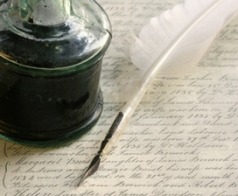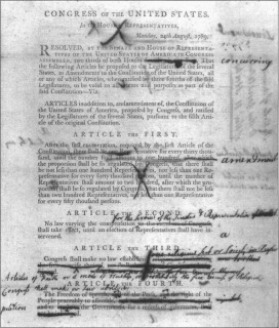The Ratification of The Bill of Rights
"You have rights antecedent to all earthly governments; rights that cannot be repealed or restrained by human laws; rights derived from the Great Legislator of the Universe."
~John Adams
~John Adams
The Bill of Rights was finally ratified so that
The Constitution would be complete, and both sides of the conflict could get what they wanted. Reforming The Constitution smoothed out the cracks between the Federalists and Anti-Federalists.
The Constitution would be complete, and both sides of the conflict could get what they wanted. Reforming The Constitution smoothed out the cracks between the Federalists and Anti-Federalists.
After a long and difficult journey, the Bill of Rights was ratified on December 15, 1791
The Senate first brought about 17 new amendments to the House of Representatives
The House used this as a draft to narrow the list down to 12 that were then sent to Congress
The Senate first brought about 17 new amendments to the House of Representatives
The House used this as a draft to narrow the list down to 12 that were then sent to Congress
In order for them to become amendments to The Constitution, three fourths of the states needed to approve them
The first state to ratify was New Jersey
Maryland and South Carolina ratified fairly quickly as well
After ten states had approved the Bill, and after 811 days of waiting, Virginia was the eleventh state to ratify, which broke the three fourths mark
Of the twelve amendments that were proposed in Congress, ten of them were finally ratified to be law
The first state to ratify was New Jersey
Maryland and South Carolina ratified fairly quickly as well
After ten states had approved the Bill, and after 811 days of waiting, Virginia was the eleventh state to ratify, which broke the three fourths mark
Of the twelve amendments that were proposed in Congress, ten of them were finally ratified to be law
Both sides in the conflict gave up something in order to make a compromise:
- The Federalists were forced to add a Bill of Rights to their already "perfect" document
- The Anti-Federalists were not able to get everything that they wanted into the Bill of Rights
Both sides made sacrifices from their causes, but the end result was well worth it
The members of both sides were responsible for the creation of the amazing form of government that America still uses today


